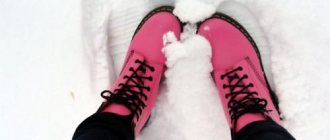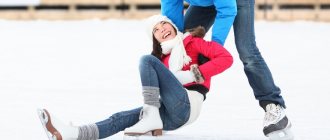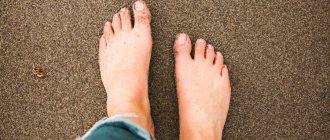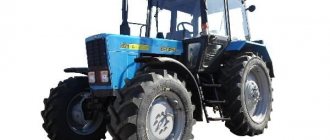Features of training
You can run on snow and ice. True, such training comes with a lot of side-by-side recommendations - how to choose shoes, how to adjust the pace and technique, and increase attention and concentration during training.
Running for Mortals coach Jenny Hadfield points out in an interview that “the key to running safely on snow and ice is understanding that you will have to slow down and put in a lot more effort, and think ahead about your technique choices.” running."
Running on snow and ice is a minus for speed, plus for strength and endurance
The peculiarities of running on ice and snow require increased concentration, greater effort, adjustments to technique and the choice of different shoes. But winter running is a great time for volume training at a slow pace, which will be successful if you follow these recommendations.
Interpretation of a dream barefoot in the snow according to the dreamer
For a girl
Barefoot in the snow for a girl - the relationship with her beloved will soon end, perhaps betrayal on the part of her lover.
Help Seeing white fluffy snow in a dream means a quick solution to an issue that is important to you.
for woman
Walking barefoot on snowy ground means that there is no reason to worry about a possible separation from your loved one. Your feelings are strong and together you will be able to overcome troubles.
for pregnant women
Walking in the snow for a pregnant woman means a good outcome of pregnancy; the child will be born strong and healthy. The expectant mother should stop worrying about the upcoming birth.
for unmarried
The dream promises pleasant changes and new friendly relationships. Marriage in the near future.
Help Walking in dirty snow is a bad sign. This promises mental anguish and suffering from the betrayal of a loved one. Also, a dream can indicate poor health; perhaps you should consult a doctor.
Black snow cover can predict the death of a distant relative.
for married
Walking through the snow to your loved one is a sign of inattention to each other, which can cause serious discord in the relationship.
for men
Barefoot in the snow is a favorable symbol, promising good luck in the professional and financial spheres, stability in work and relationships.
for a guy
Such a dream means confidence in your sexuality and attractiveness. For a young man, this dream is a good sign.
Why dream of walking barefoot - interpretation of a barefoot dream according to dream books Many saw themselves in a dream in various unusual states, for example, barefoot in the middle of the street. Such dreams should not be ignored under any circumstances...
Running technique and pace
Since when running on snow or ice, first of all, you need to avoid falling and sliding, you should reduce the flight time during the running step, think through the placement of the foot, and stabilize the body more.
A long stride, in which the foot lands far in front of the body, makes it difficult to maintain balance and makes it easier to slide. Aim to take shorter, more frequent steps—that is, increase your cadence to the considered ideal 180 steps per minute.
Try to land your foot under the center of gravity - that is, under the hips. Thanks to this, the flight will be shorter and the landing will occur earlier.
marathon and half marathon training plans and start training today!
Slow down your pace and speed when running on ice and snow. Don't be afraid to change your plan for your running pace, and don't be afraid to step up during particularly difficult sections.
Try to place your foot flat, not on the toe or heel - the larger the contact area, the greater the grip and stability.
Read on topic: Basics of training for winter races and marathons
With this foot placement, there is less chance of slipping and falling or pulling a muscle Photo: Getty Images Source: nytimes.com
How to prevent injuries
Since training on snow and ice is an increased level of difficulty, it is worth paying a little more attention to safety, training stabilizer muscles and recovery.
Safety precautions
Watch where you put your foot. And be prepared for the fact that there is a hole, rut, root or ice hiding under the snow. Try to keep your knees and ankles in a state of “relaxed readiness” - soft, not tense, but ready to react and stabilize your leg in time when sliding or twisting.
Stabilization exercises
To ensure your legs are ready to respond as described in the paragraph above, pay attention to training the stabilizer muscles, training the feet, strengthening the calves and shins.
Do jumping jacks, toe raises, exercise on a balancing platform, and do exercises to strengthen your core muscles.
Read on the topic: Physical fitness for runners: 30 exercises with your own weight
Recovery
Despite the fact that the training will take place at a low pace, the muscles will have to work more intensely, they will begin to become more clogged, and the soreness may be more serious than usual. So pay attention to stretching, massages, and recovery.
If possible, sometimes go to the gym on a treadmill.
Obstacles appearing
The speed limit must be exactly such that the car can reliably maneuver or stop in front of an obstacle illuminated by the headlights. Thus, if the boundary of light and shadow when low-beam headlights are on is approximately 25-30 m, the driver must maintain a speed of about 60 km/h in order to have time to react to an unexpected obstacle. At this speed, the car remains guaranteed to be controllable even on slippery surfaces.
An obstacle could be a large snow drift that accumulates in gaps in the forest belt, or another car involved in an accident.
Often there are trucks or empty trailers on the roadside, abandoned by drivers because they are unable to continue driving. Most often, truckers wait out bad weather on the tops of hills or in lowlands due to the impossibility of climbing up a slope in a truck during icy conditions.
What to run in
Most likely, you won’t be able to train in summer sneakers during snow and ice. Shoes with good tread and at least minimal water-repellent properties will come in handy.
Sneakers for running on snow and ice
- Choose sneakers with an aggressive tread; with rubberized sole; with a Gore-Tex membrane that will protect well from melting snow. The ideal option is trail sneakers.
- The upper of the sneaker is anything but mesh. It is blown, gets wet and, accordingly, is not suitable for protection from the cold.
- Check out adidas' winter running line, like the adidas Terrex Skychaser LT, or Nike's Trail running shoes, like the Nike Pegasus Trail.
- Take a closer look at sneaker models with spikes. These are not the kind of spikes that are used in stadiums, but trail running shoes with built-in spikes. You can run in them both on snow and ice. The downside is the relatively heavy weight. An example model is ASICS Gel-FujiSetsu 2 GTX.
Studded linings on sneakers for running on snow and ice
Non-trail sneakers or sneakers without spikes can be “pumped up” with the help of studded overlays on the sole - they are also ice-accessible, they are also shoe attachments, they are also “crampons”.
The attachments on shoes suitable for running are overhead cleats that are attached with soft rubber bands to the toe and heel of the shoe - these are not aggressive climbing crampons. These attachments can be purchased in the hiking section of sporting goods stores.
These can be either the actual spikes or spring-type attachments. It is better to choose ice shoes with spikes on both the front and back of the sole - they are stronger and more stable.
Running in attachments will take a little getting used to. After use, the attachments must be wiped and dried. It is better not to run on asphalt - the attachments will deteriorate.
You can run in the snow in regular winter sneakers; it’s better to go out on the ice with spikes on.
Why do you dream of running on water?
Running on water has different meanings - they depend on which dream book you look at them in:
- According to Miller's Dream Book: to quickly overcome obstacles and solve problems.
- Vanga's Dream Interpretation: You should protect yourself from problems if you have walked through troubled waters, and also protect yourself from conflicts and difficulties with other people.
- Tsvetkov’s Dream Book says: to monetary losses and an unstable situation.
- Muslim dream book: soon you will need to make a fateful and important decision.
- Freud's Dream Book: the desire for the unknown and new.
- According to the Dream Book of the 21st century: to great happiness.
- Dream Interpretation of Nostradamus: running on water symbolizes excessive excitability and imbalance.
- Modern dream book: a sign of success.
- Esoteric dream book: to overcome all difficulties.
Is it possible to do speed training on ice?
It’s better not to do intervals and speed training outside in winter. They, most likely, will not work, because instead of a forceful push and acceleration, you will begin to slip, and instead of braking after acceleration, you will roll forward until the first snowdrift or until the first fall.
In winter, it is better to move speed and interval training to a treadmill in the gym. A stadium is also suitable for this if the tracks on it are cleaned well, down to the rubber surface.
Approach winter training as if it were time to build an aerobic base - snow and ice themselves dictate the need to run slowly, at a measured pace, with a high cadence.
Read on topic: Treadmill training: exercises, advantages and disadvantages
Helpful tips for running in winter
- Dress for a winter run according to the principle of multi-layering: 1 layer - thermal underwear, 2 layer - long sleeve, and 3 layer - a windproof jacket.
- If your sneakers don't have spikes, you can screw them in yourself. Check out metal sneaker spikes.
- To protect your face from cold and wind, use a rich cream. Cover your face with a balaclava or bandana.
- Immediately after training, hurry to a warm place to avoid hypothermia. Change into dry clothes, cool down and stretch indoors.
- Practice in familiar places. Try to run during daylight hours and choose well-lit routes. Take a headlamp when running in the dark. It's also a good idea to have a bottle of warm drink, phone and money for a taxi with you - this will fit in a fanny pack or running backpack.
Read: How to run in the dark: pros and cons, recommendations.
Source: Harry Dona on Unsplash
Play sports, move and travel! Subscribe to us on Instagram, Telegram, YandexZen and Vkontakte.
Lifehacks
Here are some more tips for running outside during the cold season:
- Choose the right snow. Your best option is fresh or compacted. So-called “powder”, soft or damp snow (which is great for building snowmen) is ideal for running training. It slips less and provides excellent grip.
- Run familiar routes and stick to the roads - unfamiliar trails and forest paths may greet you with potholes and roots.
- Wear high socks or so-called gaiters - external leggings that are worn over your pants and on top of your boots - they will protect against snow getting inside your shoes and from hypothermia.
Summary
Don't give up training in winter. It’s better to choose the right equipment, slow down the pace, change your running technique. In your running technique, the first step is to change your cadence - speed up your stride and shorten its length. Reduce the pace, go to a walk on particularly difficult sections, and do not do high-speed work on ice and snow.
Don't forget about stretching and massages, pay even more attention to strength exercises and exercises to strengthen the stabilizers, foot and calf muscles.
Use trail shoes or buy spiked shoe tips. And when winter is over, you'll be in great running shape without having to start all over again.











